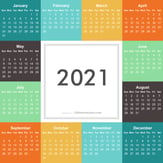
By Melissa Sweat, Online Community Manager
Change. Why is it so hard? How can we make effective, lasting changes in our organizations, lives, and communities when change itself seems so overwhelming and monumental? How do you even start? In the New York Times bestselling book, Switch: How to Change Things When Change is Hard, authors Chip Heath and Dan Heath provide refreshingly new perspectives on change in a vivid and practical narrative, while deconstructing the various barriers and how to surmount them.
I’ve summarized the first chapter to help illuminate the authors’ change-inspiring findings and jumpstart your “switch”:
The first surprise about change? “What looks like a people problem is often a situation problem.” As an example, the authors cite a study where people at a movie theater ate more popcorn out of bigger containers than smaller ones. People vs. Situation. If you want to get people to make a healthier choice with their popcorn eating, then the answer is simple: provide smaller containers. Identifying where changes can be made situationally can create profound and effective results.
In order to adopt change, we also need to understand, guide, influence, and attend to our hearts and minds. This can be difficult when head and heart so often disagree. To further explain this dichotomy, the authors refer to a book called The Happiness Hypothesis in which our emotional side is described as an Elephant and our rational side as the Rider. The Rider is the leader and has some ability to control and guide, but the Elephant is far stronger and, if provoked, tired, worn out, or scared, is always going to overpower the Rider.
Both Elephant and Rider have their strengths and weaknesses. The Elephant seeks short-term payoff, while the Rider can see goals for the long-term. The Elephant, meanwhile, has the power of emotions: love, compassion, loyalty, sympathy, ferocity—aspects that are going to commit and motivate ourselves toward lasting change. These are furthermore the things that connect us with other people and can make a compelling case for ourselves, company, brand, point-of-view etc. To drive change, you need the work, energy, and heart of the Elephant.
While the Rider is a decision-maker and a good guide, she can also overanalyze, which can be a paralyzing hindrance to change, as well. So you have to appeal to both and have Rider and Elephant move together. As the authors say, “A reluctant Elephant and a wheel-spinning Rider can both ensure that nothing changes.”
The second surprise about change: “Change is hard because people wear themselves out.”
Again, you can avoid wearing yourself, team members, or employees out by appealing to Rider and Elephant. You do this by providing crystal clear direction to both—which is the third surprise about change.
Here, in short, is the authors’ three-part framework for accomplishing change:
1. Direct the Rider.
2. Motivate the Elephant.
3. Shape and Direct (Clearly) the Path/Situation/Environment/Strategy.
What are some of the challenges you've experienced when trying to make change? What are some effective strategies you've discovered? Share your thoughts below.
For more helpful articles and tips, join our Accomplishing More With Less groups on LinkedIn and Facebook. Follow People-OnTheGo Founder Pierre Khawand on Twitter.








